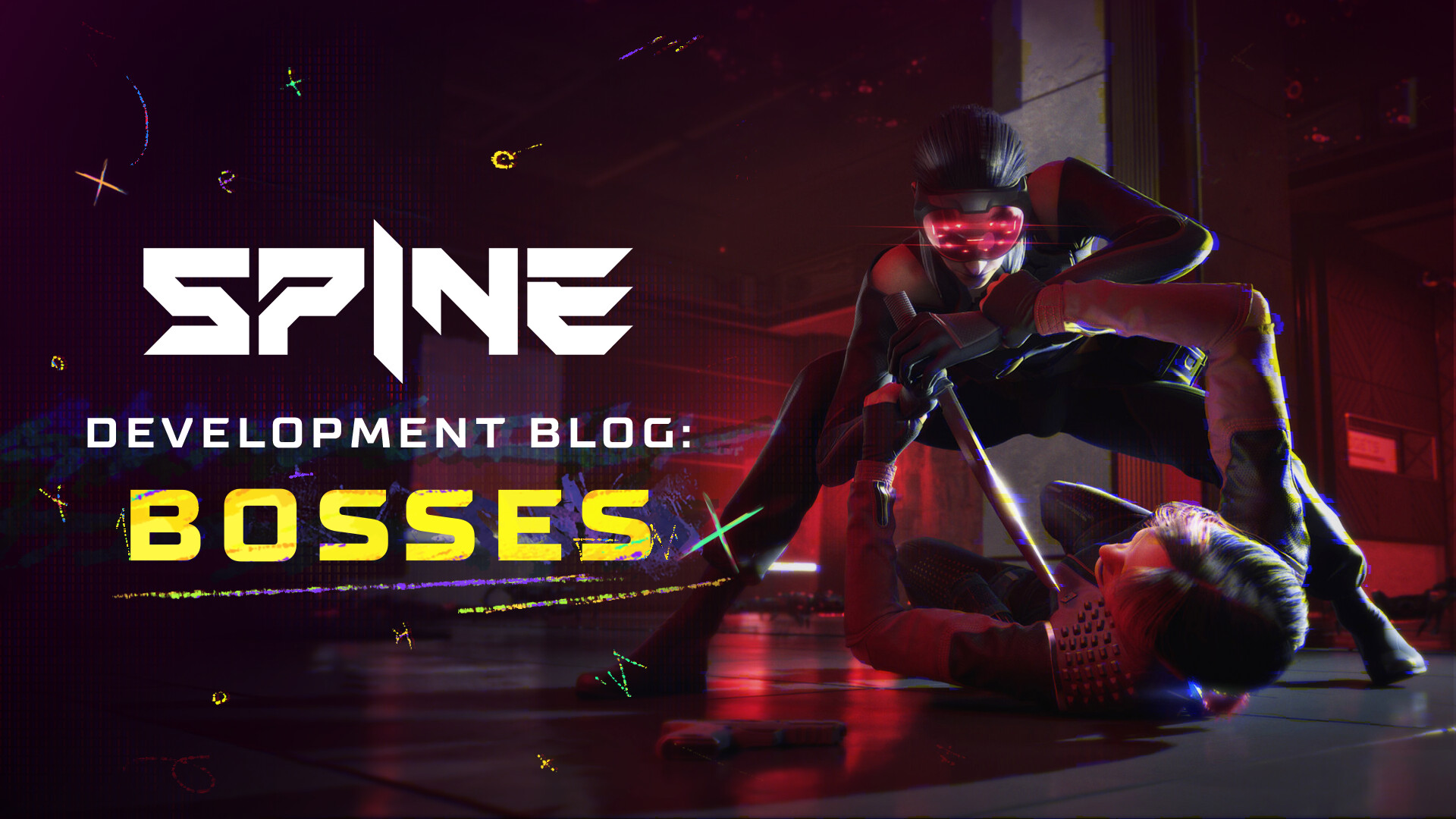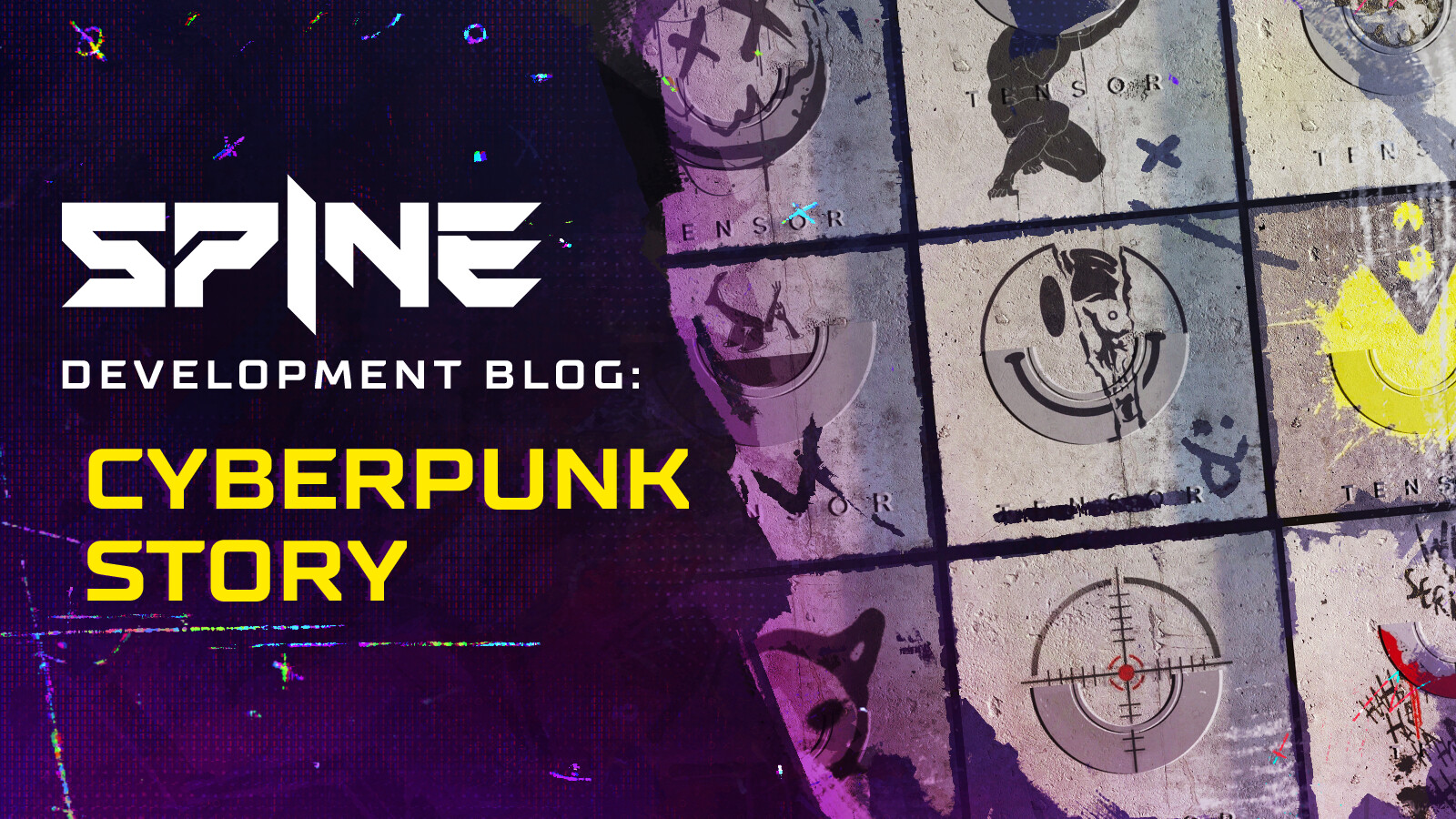SPINE DEVELOPMENT BLOG: ART DIRECTION
Hello, Tensor Citizens!
As passionate gamers, we don’t just develop SPINE. We’re part of the community and love to share the inner development process. This passion fuels our desire to create projects that truly resonate with the players.
That’s why we decided to tell you more about the development progress of SPINE’s various aspects in this blog. Let’s start with what all players see — our visual style, art direction, and, of course, Redline’s character art.
Cyberpunk Character Design: Dress to impress
When creating Redline’s appearance, we were primarily focused on the kind of character we wanted to play – not perfect, but appealing. Redline is an unusual girl — brave, courageous, and determined. She’s not afraid of risk because she’s confident, even overconfident at times.
More often than not, however, she gets lucky and gets away with it. We wanted the image to match the main character herself – to be bright and rebellious, but not trendy and neat. Life in the Old City is hard, so it would be wrong to create an image of a girl fixated on her appearance.
At the same time, Redline is characterized by self-expression through appearance — spikes on the jacket, patches, and brightly colored hair.
We didn’t want to create another plastic beauty, although this image remains popular in many other projects.
We think that Redline Character Design turned out to be alive and real. Such a girl can go against the whole world for the sake of what is important to her.

This is our approach to all aspects of character design. Characters’ appearance should reflect their personality, history, and beliefs. At the end of the day, Redline is fighting the system, and that is the most important trait of her as a character.
“In SPINE concept art every detail matters. True character design in video games brings life to the story.”
— SPINE’s Art Director Alexander Nemov
There is a contrast between the people of the Tensor system and those who fight against it. Redline has many enemies, but the main antagonist in the game is the leader of Tensor’s security forces, the Judge. It was essential to develop them in parallel because their differences define each of them in many ways.
The Judge epitomizes the system: rigid, morally questionable, and sees a selectively bright future. Despite his conservative nature, he embraces the latest technology, as seen in his implants and his own Spine. His image reflects formality, restraint, and strict adherence to self-made traditions.
Redline is a passionate artist who protests against injustice and inequality in society. Young and energetic, she represents a future of personal freedom and lack of control.
The difference is noticeable:
The Judge’s minimalist and slightly sinister outfit is in stark contrast to Redline’s bright and joyful clothing. Her design uses bright reds and blacks to give the image a dynamic feel, while the Judge’s colorless costume emphasizes his role as a villain in a soulless authoritarian system.
This way, the visual elements complement the narrative.

Blending Cultures in SPINE Cyberpunk Aesthetic
But inspiration doesn’t just come from ideas and concepts.
Since we have a diverse team of people from different ages and cultures, we thought it would be interesting if each of our artists brought some unique details to the visual design of the game. Thus, environmental art and characters were filled with features that make them lively and unique.
For example, that’s how weighing scales from someone’s childhood appeared on the Market location. You may have seen these in our Early Gameplay Teaser. The costumes of one of the opponents feature details of Korean police equipment that the artist saw while on vacation, and so on. The world of cyberpunk is a post-cultural landscape, and it becomes even more beautiful and exciting when elements from diverse cultures are combined.

Classic & Modern Influences
When talking about our world and surroundings, we can’t help but mention our visual inspirations. Cyberpunk is a rich genre that encompasses works such as Blade Runner, Ghost in the Shell, Deus Ex, Cyberpunk 2077, Detroit: Become Human, and many other notable examples. All of these projects are very inspiring to us. Still, we wanted to move away from the usual retrofuturism and create a more modern visual language, drawing on current trends in fashion, industrial design, and graphic design. This vector helps us keep the SPINE aesthetic grounded.
Building a Coherent World

When we were thinking about the story, we decided to make it unique and realistic at the same time. We thought about what the near future would look like and how it would be different from what surrounds us today. We didn’t want to create a world full of flying cars and cybernetic implants like in science fiction movies. Our main reference points were still action movies like John Wick and Equilibrium.
Since we are creating a game about an action movie experience, and Gun Fu is an action genre originating in the East, thanks to John Woo, Eastern culture is one of the most important sources of inspiration. It’s helpful that our team had a lot of experience creating games in that setting, and we tried to transfer it to SPINE.

Challenges of Creating SPINE Art Direction
The primary goal was to create a coherent world and establish the visual style’s boundaries and rules. The game’s original concept included many elements, but not all of them have stood the test of time. For example, initially, we decided to go with an active floor design with lights, panels, graphics, and animation imprinted on it. However, we were unable to implement this in production, although the special attention to floor design remains present in SPINE.
By removing that feature, we added another — great visual details mixing graffiti and digital imagery. We want the characters and environments to work together — the characters to be distinguishable and the environments not to look pale. And if teams work separately, this is a challenge that can’t be met.
So we had a lot of discussions and brainstorming sessions about art design, and as a result, detailed guidelines covering all these topics were born.

The character guidelines include details such as the proportions of color palettes for different social groups, the nature of geometric shapes used in costumes, weapons, tattoos, makeup, and accessories.
They helped us a lot in making choices during the development process while having enough material to create sequels and expand the SPINE universe in the future. It’s probably this attention to detail and world-building that has allowed us to create a successful series of games in the past and has brought SPINE to the attention of our current partners, such as Story Kitchen.

